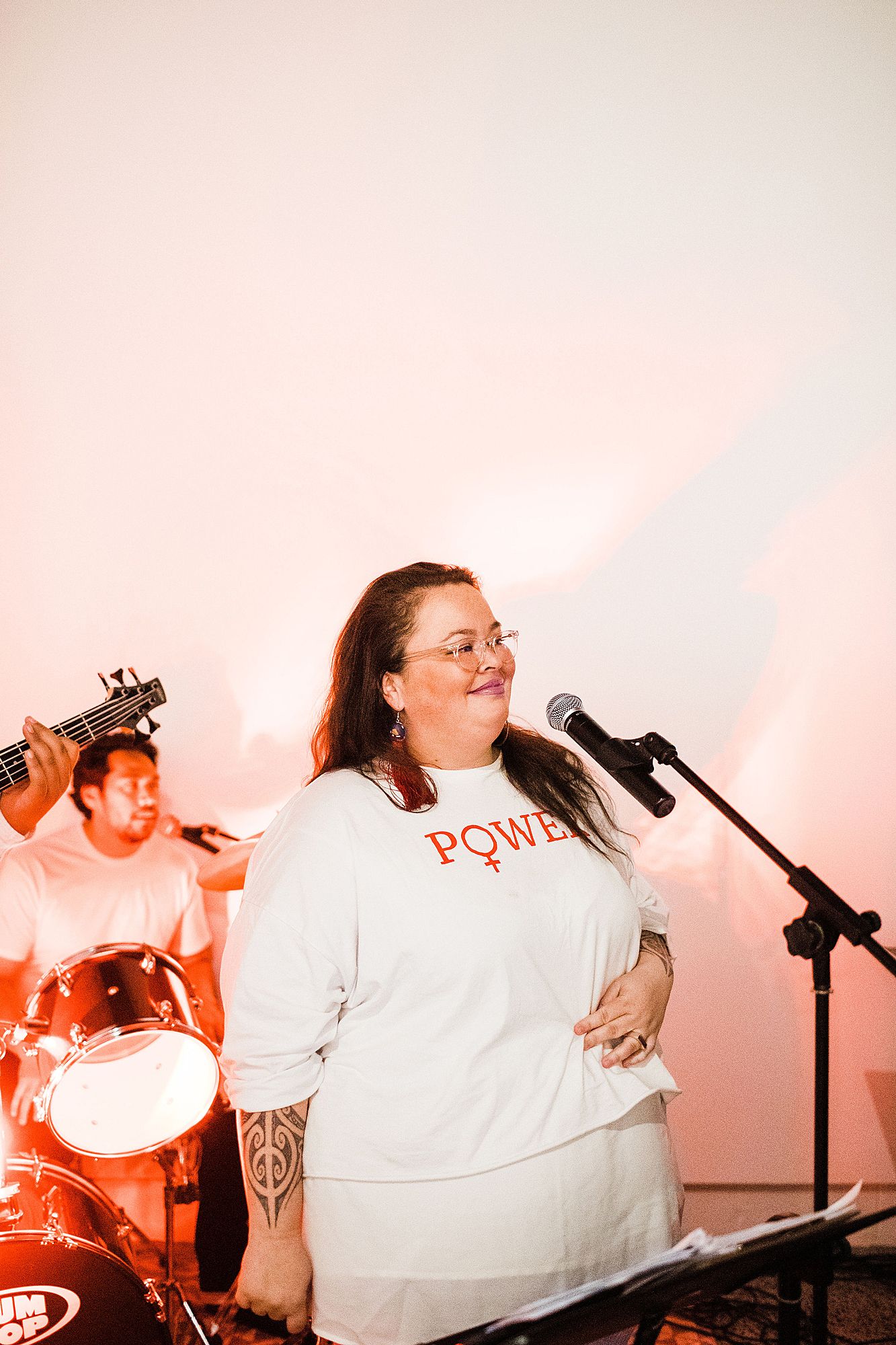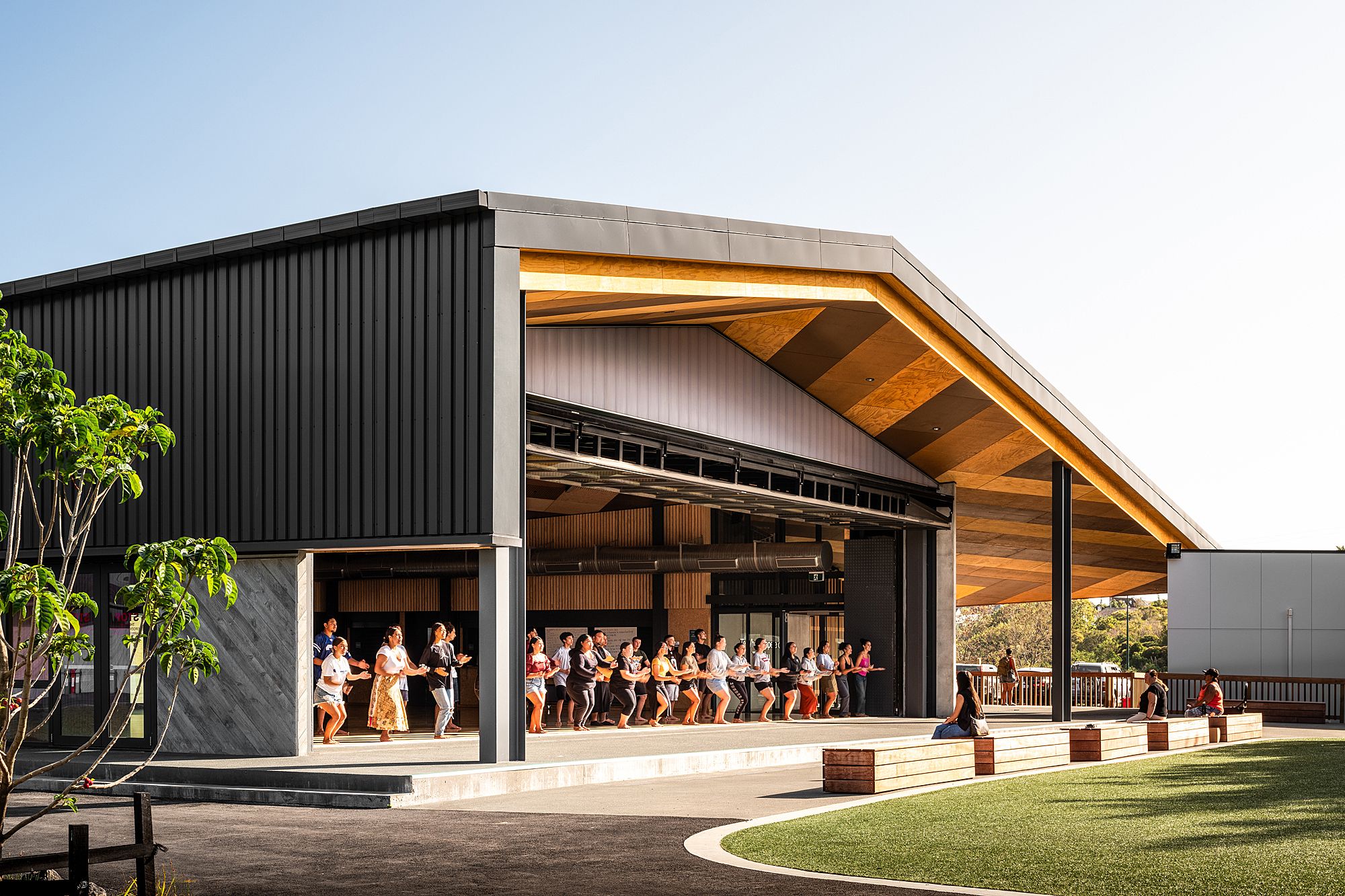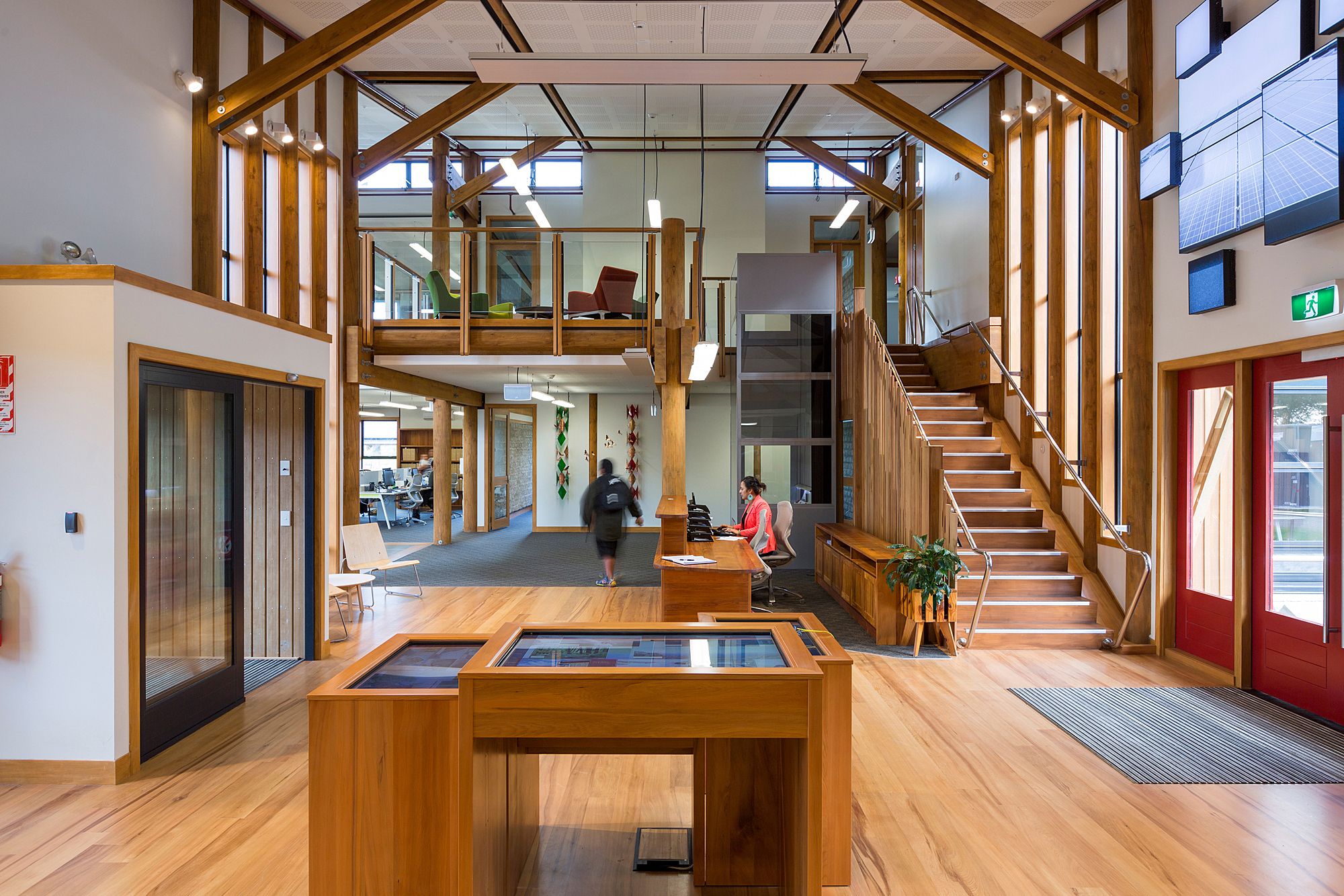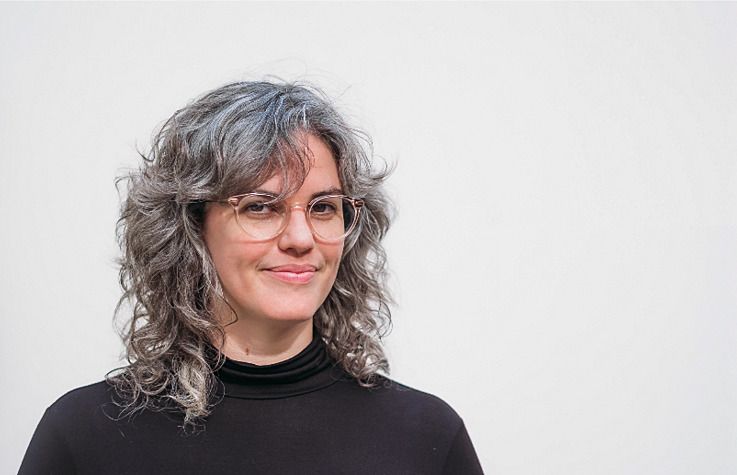Learning from Land: An interview with Elisapeta Heta
Sophie Rzepecky speaks to architect Elisapeta Heta about the intertwining of architecture and knowing yourself.
Architect Elisapeta Heta spent much of her time last year in the small town of One Tree Point just north of Ruakākā, on the east coast of Aotearoa New Zealand, in lockdown with three generations of her family. For her, the practice of architecture is intertwined with the practice of knowing oneself, knowing the fundamentals of where you come from and how you came to be upon the land. Her whakapapa, or genealogy, crosses many worlds: on her father’s side, Ngātiwai and Waikato-Tainui, iwi in Northland and the Waikato region respectively; on her mother’s, Sāmoan and British heritage. Learning to negotiate the needs of a large family network put her in good stead for her current work at Jasmax, one of the largest and oldest architecture practices in Aotearoa. There, she is Senior Associate Architectural Graduate, Kaihautū Whaihanga, Māori Design Leader and one of the founding members of Waka Māia – a collective within Jasmax of architects who specialise in engaging mana whenua, Māori who have rights over the land, and applying Te Aranga Māori Design Principles to projects.
What do you think motivated you to work in architecture?
The first house I can remember living in was probably about 35 to 40 square metres, very small and badly insulated. It was effectively a worker’s cottage – these were single dwellings that were meant to be temporary, for people who worked on the railways in the early 1900s. My British great-grandmother used to buy us lottery brochures. If you won first prize, you’d win a mansion on the Gold Coast in Australia. Nowadays, I would look at it and say, “Oh my God, six bedrooms, six bathrooms. What a monstrosity!” But at that young age it blew my mind that people really lived in those places. The brochures had plans in them, so I would study them intently and draw my own versions. As a five year old, I associated those large houses, and being able to design them, with wealth, happiness and being healthy.
But, really, I had very little exposure to architecture as a profession. I had uncles who were builders, whom I admired, but architecture is not something our communities necessarily know how to support our children into.
What was learning architecture at The University of Auckland like?
I was the first one from either side of my family to go to university, and it took a while to get used to the environment. In 2007, when I started, the foundational knowledge was Western-centric; we learned about movements like modernism and postmodernism, Art Deco and Art Nouveau… apart from very quick conversations about vernacular architecture in Aotearoa, there was never a Pacific lens. So I just assumed that’s all architecture was. But what I was learning and what I was experiencing as a person in Aotearoa were two very different things.
The purpose I eventually found aligned with the communities I cared about – my whakapapa. In my fourth year, I took an elective with Professor Deidre Brown, an expert in Māori and Pacific architectural and art history, which opened my mind. There were only nine of us in that class from a year group of 120. That’s when I started to speak out about the fact that we weren’t given foundational courses around the history of architecture in the South Pacific. It shocked me that we were not taught histories that had real relevance to the lived experience of all New Zealanders.
Elisapeta Heta performing with her band Courtroom Brown. Image courtesy of Elisapeta Heta.
Why do you think such a wide knowledge gap exists in the architectural field?
The simple answer is systemic racism. For example, in 1974, Dr Mike Austin, a Pākehā scholar, tried to do his PhD on Pacific architecture at The University of Auckland. It was initially declined, with the reasoning that Māori didn’t make architecture, they made huts. He fought that and eventually published a PhD in 1976, titled ‘Polynesian Architecture in New Zealand’, which started to validate the idea that the architecture of Indigenous peoples of the Pacific was in fact architecture.
We need to make fundamental structural changes to the way the education system is approached. More Māori teachers, more Māori students, more awareness about architecture as a viable profession earlier on. There is progress, but our numbers are not big. I read a report recently that said numbers of Māori students enrolled in architecture programmes had actually steadily decreased over the last ten years.
Perhaps if the definition of architecture would be more as social infrastructure or service, then there might be a clearer connection to the way it affects us in the everyday.
It would be so exciting if design thinking and knowledge was a part of our cultural foundation in Aotearoa – and in Australia, because we have a lot of influence on one another.
I’ll tell you a story. My great uncle grew up in Sāmoa, learning how to be a builder from his father and grandfather, who would travel across the country building fale, a type of Sāmoan building. Actually, they were building Tufuga fale, in which the act of building was a community-wide thing. They told me that everyone had a job and a role to play. The children’s job was to go down to the river to collect stones and bring them back to the site, and they had songs that they would sing about those stones. That’s design culture: thinking about, being engaged in, and talking about building. So we had these fundamental systems of community engagement with building. But we disassociated from them because of the hyper-specialisation required in Western culture for the architectural, engineering and building industries.
Te Kura Whare is a good example of a project that connects to community. It is a building for governance and meeting, completed in 2014, for the Ngāi Tūhoe iwi in Tāneatua, in Te Urewera close to Whakatāne. It was put through the Living Building Challenge, which made sure there was zero waste and toxicity from the project. Part of that process was also to consider where labour comes from, so Jasmax worked with a contractor that hired local community members to help build it. Since then, we’ve had teenagers from that community approach us asking how to become architects. They’ve grown up in this tiny town with this beautiful building that they collectively own and love, and it's affected how they think about their futures.
You are part of a team at Jasmax called Waka Māia. What is its purpose, and what was the motivation behind it?
Waka Māia is a collective of (currently) six Māori graduate architects. It was formed around 2015 to give structure – and mana, or power – to conversations we were having about how to engage mana whenua in design projects. There are many areas of work, but the major one (which many Māori have to deal with regardless of their industry) is education on Māori tikanga, worldview, and ways of doing things. Early on, we recognised we had to invest in uplifting the general cultural capacity of Jasmax.
We also work on projects that try to meaningfully engage mana whenua in the design process. We are constantly asking ourselves, what is Māori architecture? What does it look like today? What could it look like in the future?
Our name was gifted to us by 86-year-old kaumātua Haare Williams. The day we decided on the name Waka Māia, he sat with me and cried, and said, “I remember walking beside Whina Cooper, during the land march to the New Zealand Parliament in 1975 to protest against the loss of Māori land. I never in my life thought I would see a Māori person like you sitting in a space like Jasmax.” He couldn’t imagine something like Waka Māia could happen in his lifetime. That made me incredibly sad, but I also thought, “Okay, so we must be doing something right.”
Ngā Puna o Waiōrea Western Springs College, a project Elisapeta Heta was a part of at Jasmax. This is the ‘Whare Tapere’, a building that is multipurpose, but mostly designed for kapa haka in the full immersion part of the school. Image courtesy of Dennis Radermacher of Lightforge.
How do Waka Māia – and, by extension, Jasmax – form a relationship with land and the environment you build into?
From my perspective, and I don’t speak for all Māori, we are whenua, we are the land. My relationship to whenua is complex, it’s tangled up in who I am. To a degree, I come with the same questions for every site: Who are the people that have loved and cared for and lived on this land? Are they still here? It’s a big responsibility and it is one that weighs on me heavily. A friend of mine once said to me, “I wonder if architecture is not building on the land, but interrupting it.” Sometimes I worry we’re doing more than we should.
Jasmax has tried to make a very considered effort around sustainability, which has developed into a conversation around regenerative design practice. This is equally a very challenging space, because what does that mean? Do you refuse unequivocally to ever use concrete again? There are some really worthwhile but complex conversations still to have.
How do you bring mana whenua meaningfully into the design process?
Over the last 18 months, I’ve been working on Porters Avenue Footbridge, which will be in the dense residential suburb of Mount Eden in Tāmaki Makaurau Auckland. It’s a small but crucial part of the City Rail Link (CRL), which Jasmax has been involved with since about 2012. The client, CRL Limited, developed a governance board of key iwi members represented in Tāmaki at the beginning of the project. They are dedicated and committed to that partnership – and it is a partnership, not a consultation. It’s not always 100 percent smooth, but it’s not tokenistic. When Jasmax was engaged to do the initial designs (alongside Grimshaw, Alt Group and designTRIBE) for the stations Aotea, Karangahape, Maungawhau, or Mount Eden, and Britomart, they worked in collaboration with mana whenua to develop a narrative around each one.
Porters Avenue Footbridge is close to Maungawhau, one of the most prominent maunga in Tāmaki. There is specific basalt stone that you can find there that would have been used to make tools, including chisels. To fold mana whenua into the design team, we worked with an artist from one of the iwi, Tessa Harris – a local sculptor, weaver and carver. With her, we developed a narrative design for the bridge that evokes the types of taonga, or tools, that were found there.
Are you redefining the term ‘placemaking’ by bringing to life projects that have a sense of Māori storytelling and collective ownership?
Could we call ‘placemaking’ ‘global Indigenous care’? I went on a residency last year to Toronto to spend time with First Nations artists and designers. We came to a consensus about why Indigenous peoples fundamentally struggle with the term ‘placemaking’ – it’s because we don’t make place, place makes us. Porters Avenue Footbridge will inform the identity of Mount Eden for generations. The process of making with mana whenua – that ‘to and fro’ – means that the place, and the land, has informed the design.
The suburb of Mount Eden doesn’t have anything identifiably Māori in it. People don’t call the maunga by its te reo Māori name Maungawhau, they call it Mount Eden. But the station will be Maungawhau Station, and everything new about that place and that space is going to have identifiable stories and narratives that are Māori. It’s quite radical when you consider that Māori populations have largely been driven out of the inner-city suburbs.
There is an enormous responsibility in that with relation to duration. What is the role of architects, for you, and how much responsibility should they feel?
As architects, we are privileged to have an almost generalist training. To be an architect you have to know law, sociology, anthropology… you need to think pragmatically, while understanding the psychology of how people move through spaces. We have a really unique role at the intersection of pragmatism, beauty and joy, and the ability to reflect the human condition in all of its complexity. Architecture intersects life.
However, the stereotype of the egotistical architect has pervaded for a reason. A Māori client’s scepticism is especially valid because historically architecture is not a profession that has ever listened to or acknowledged them. I try to combat that by being compassionate and by truly listening to how they want their space to feel.
An interior view of Te Kura Whare. This project went through the Living Building Challenge, which made sure there was zero waste and toxicity from the build. Image courtesy of David Olsen.
We are at a fraught moment in history, with all the cracks in our systems that the events of 2020 have brought to light, especially structural racism. How has that affected the architectural world in Aotearoa?
There is a rawness in our lives at the moment. Racism here tends to operate more covertly than overtly. Architecture is fundamentally a very privileged industry; sure, there are a lot of white dudes, but it’s also predominately made up of people who come from affluent backgrounds. We need to talk more about class privilege in architecture.
What advice would you give to a young person interested in being an architect?
Know who you are and where you come from. Know this, and you will realise the world is more interconnected than you think. From an Indigenous perspective, it’s more productive to have a conversation with someone when they know how they came to the land they stand on.
When you are able to make yourself aware of who you are, and your privileges, it means you can be a better ally. It makes a huge difference to the way you listen, the way you interpret. Who you are influences everything – what you design, how you design, and why you design.
This article was first published on Assemble Papers in October 2020.
Feature image: Te Kura Whare. Image by Ana Dermer.




